As I wrote in a previous article presenting the House of Command tool, Management is about developing and managing people. For more information, click here.
Experiencing 16 years of owning and managing a manufacturing company, I realized that Management is both an art and a science.
Trying to find correct answers to solve real, practical issues, I made a long and exciting journey on the bibliography. Sometimes, when the pressures of real life overwhelm you, you try to find enlightenment on what other people think about and experience. Reading books and making meaningful live connections with people is a way to do this.
After all these years of passing through many practical hardships, I distinguish ten books that I am sure can assist the thoughtful and conscientious manager.
I know that reading books is a luxury for the ordinary manager with little spare time and energy. However, the practitioner must emerge from the rising waters of uncountable demands and gain valuable insights from written knowledge.
1: The Fifth Discipline by Peter M. Senge
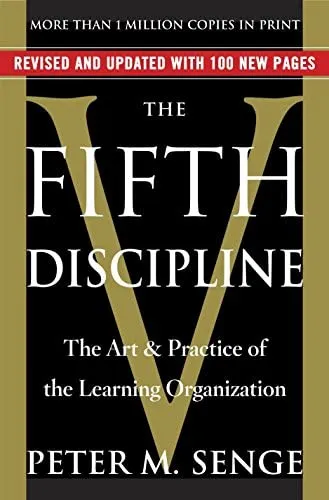
Image: The Fifth Discipline book cover by Doubleday editions
My Management Bible. A must-read for every manager that respects themself. Senge is not just writing to inform; he is writing with love.
With this book, systems thinking brings a new light to Management. In other words, it is the application of systems thinking in the organizational context, which is the fifth discipline. The others are personal mastery, shared vision, mental models, and team learning.
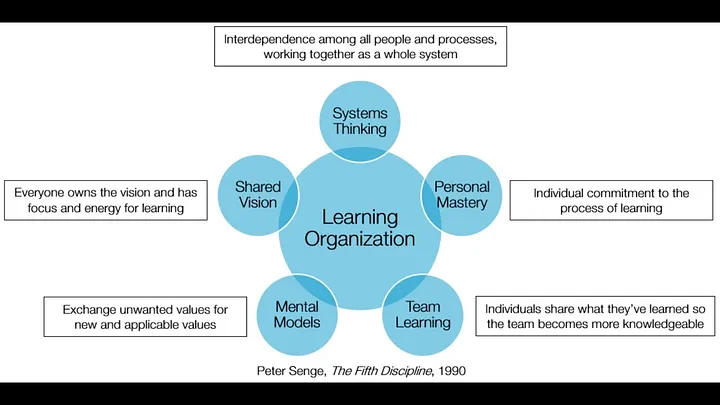
The Fifth Discipline’s main components. Credit: https://www.youtube.com/watch?v=XMbHPfmtRK4
For the writer, a manager must see the forest and the tree and have a holistic view of the organization and the job. Systems thinking is about understanding the dynamics of interrelationships between people, processes, and things.
When you engage in systems thinking, you recognize the natural causes of problems and emerge among detrimental issues like blaming and personal conflict; you embrace functionality, creativity, and team spirit.
Please read it. It will change the way you think and experience your profession. Reading it is an intellectual and enlightening experience!
2: Great by choice by Jim Collins and Morten T.Hansen
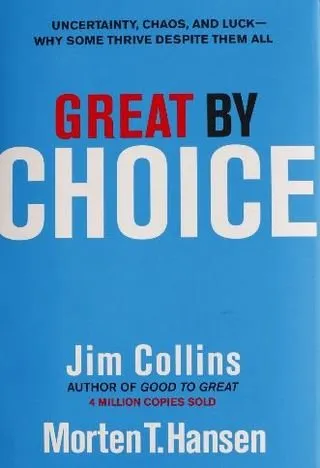
Image: Great by Choice book cover by Harper Business
Tim Collins is one of the best business writers because he writes in an elegant and easy-going manner and because everything he writes and claims is based on rigorous research.
I believe this book is his best at the time of writing. Collins and Hansen show us the findings of extensive research on big businesses. Their main investigation question was about what makes some companies increase their outcome ten times more than others during an extended period. They found some interesting patterns, which you can see in the following scheme.
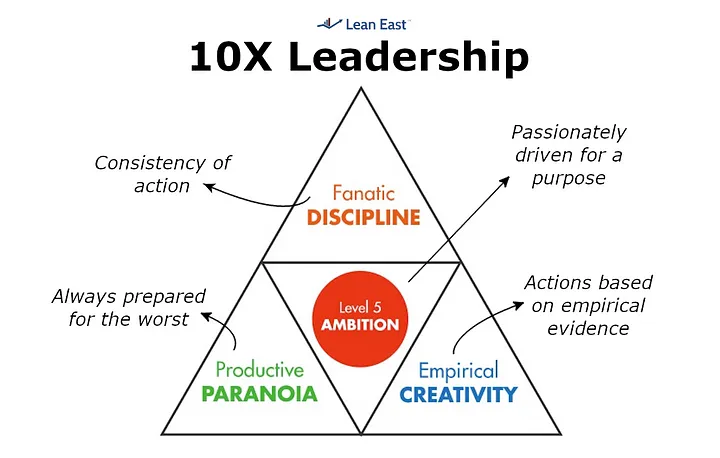
Image: The Great by Choice patterns. Credits: https://www.leaneast.com/great-by-choice
3. Harvard Business Review Manager’s Handbook: The 17 Skills Leaders Need to Stand Out by Harvard Business Review
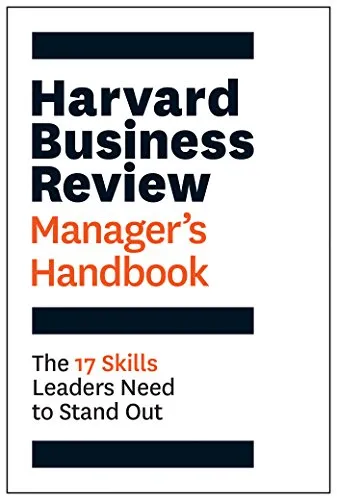
Image: Harvard Business Review Manager’s Handbook cover by Harvard Business Review Press
4. How to be an Even Better Manager: A Complete A-Z of Proven Techniques and Essential Skills
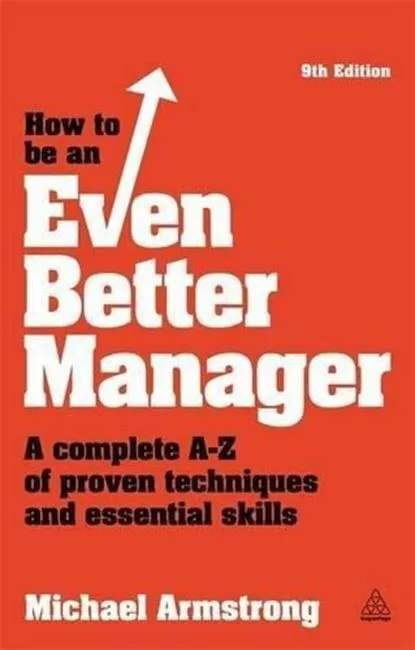
Image: How to be an even better manager book cover by Kogan Page editions
Michael Armstrong is one of my favorite writers on Management because he writes books that can use them in practice and not for reflection or thought. It is the best how-to guide in the bibliography.
Five parts constitute this book’s structure; Managing people, Developing people, Management skills, Personal skills, and Business and Financial Management. Each part contains how-to guides on relevant issues, which is the value-added of this book, a creative toolkit for the professional manager.
5. Peter F. Drucker on Management Essentials by Peter F. Drucker
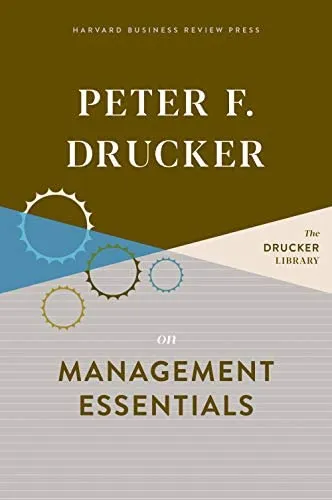
Image: Peter F. Drucker on management essentials book cover by Harvard Business Review Press
For those managers who are bookworms and reflective, this book is the best choice. Management guru Peter Drucker delivers an astonishing and timeless account of the challenges of being a manager. Moreover, Drucker defines and orients meanings like what Management is, what a manager is, and what a business is. He delves into practical elements like performance management and developing people with an innovative and refreshing look.
6. Lean Thinking: Banish Waste and Create Wealth in Your Corporation, Revised and Updated by James P. Womack and Daniel T. Jones
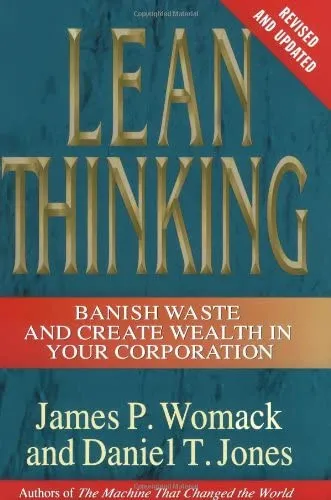
Image: Lean Thinking book cover by Free Press
If you want to be complete as a professional manager, Lean Thinking is the right book. Womack and Jone present the context of the Lean way of thinking from the Toyota Production System. Toyota, the famous automotive giant, overcame significant difficulties in the past and eventually conquered the global automotive market system through a production system philosophy that eliminates waste during the whole process.
Lean thinking, which is a way to achieve more with less, has a set of principles,s as Womack and Jones claim :
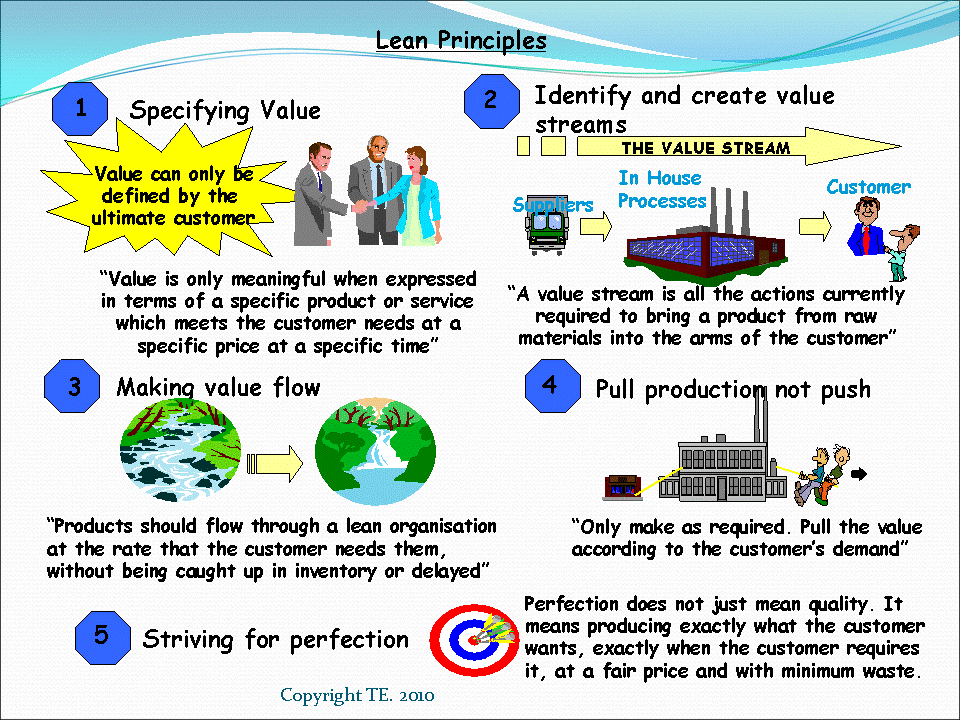
Image: Lean principles, credit:https://leanmanufacturingtools.org/39/lean-thinking-lean-principles/
In Lean thinking, every manufacturing process has seven wastes or elements that do not contribute to what customers value. Therefore, the purpose is to eliminate waste from the production process.
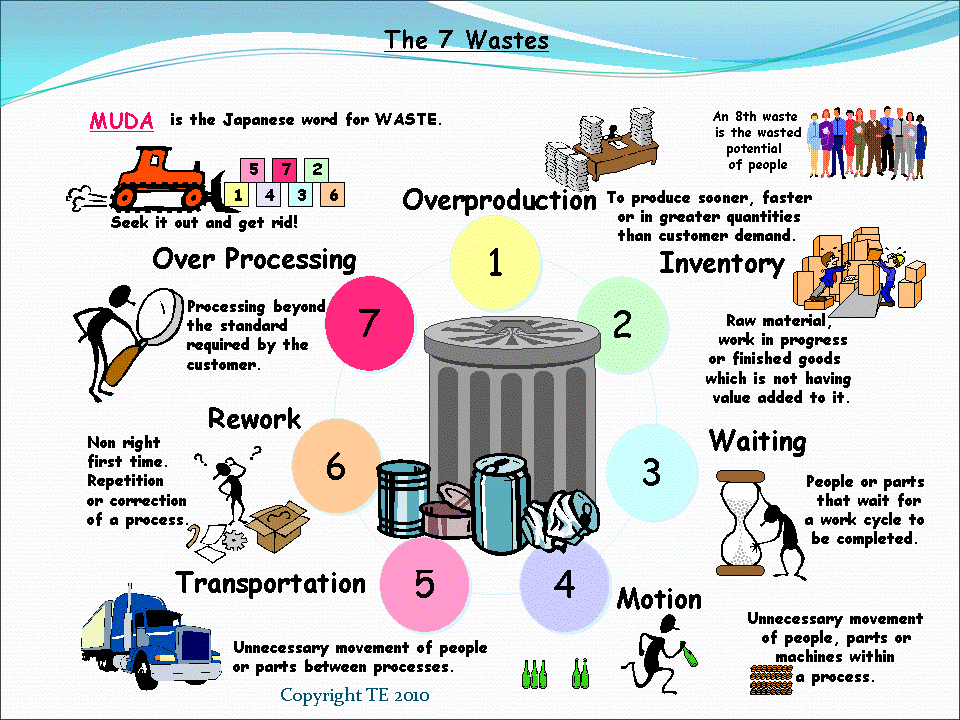
Image: the seven wastes, credit:https://leanmanufacturingtools.org/
You don’t have to work as a manager in a production company to apply lean thinking. Lean thinking, as systems thinking, can be used everywhere, even for services.
7. The Fifth Discipline Fieldbook: Strategies and Tools for Building a Learning Organization by Peter M. Senge.
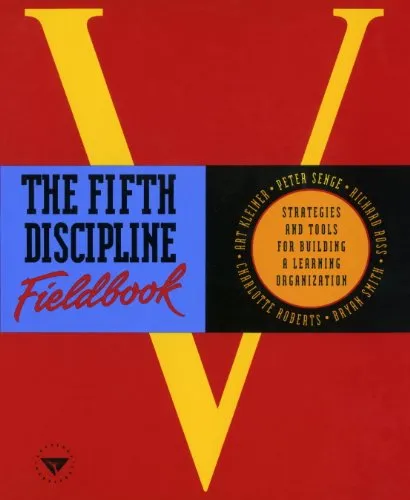
Image: The fifth discipline fieldbook cover by Currency Later Printing edition
I know; I am a huge fan of Peter Senge. The Fifth Discipline Fieldbook is the application of the first book, which you can consider as the body of knowledge.
The fieldbook is written in the same style as the main book and goes many steps further by introducing methods and advice on how to apply every discipline.
For Senge, the main point is to create a learning organization, an organization that adapts to environmental changes and develops by learning from experience and other sources.
The concept of Senge’s learning organization is familiar to Collins and Hansen’s idea about empirical creativity. Both views have the same meaning; organizations and companies that base their development on experience and measurements can succeed in the long run, no matter the circumstances.
8. What is this thing called Theory of Constraints and how should it be implemented? By Eliyahu M. Goldratt
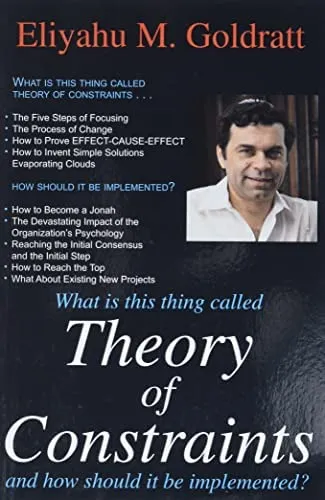
Image: Theory of Constraints book cover by North River Pr
Again a book coming from production and manufacturing but with a broader application. The Theory of Constraints is about eliminating bottlenecks from production systems. The theory suggests that every system has a small number of constraints that prevent it from achieving its goals. As a result, the theory proposes a focusing process to identify the constraint and restructure the whole organization about this constraint.
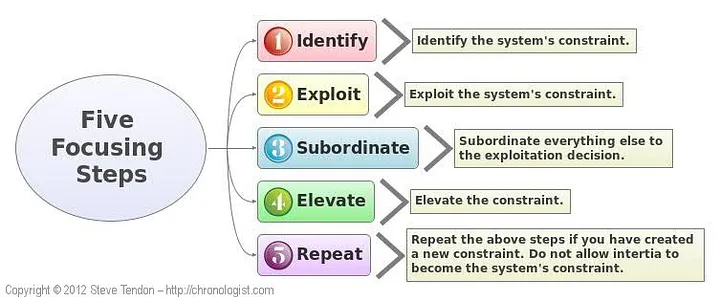
Image: The five focusing steps of the Theory of Constraints, credit: https://tameflow.com/blog/2012-07-27/theory-of-constraints-and-software-engineering/
The book can help every manager to identify the limiting factors of a process and apply the method above to make the process more efficient.
9. Business Dynamics: Systems Thinking and Modeling for a Complex World by John D. Sterman
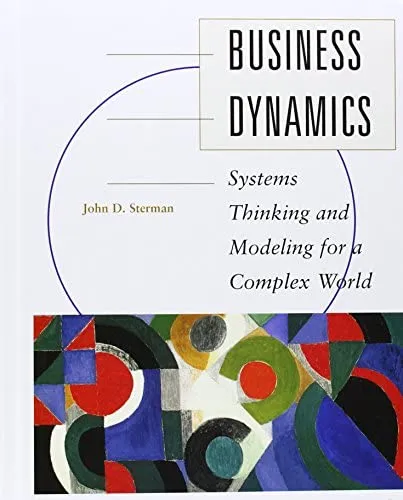
Image: Business Dynamics book cover by McGraw-Hill Education
The most technical book on the list. System dynamics is modeling systems thinking; the purpose is to understand complex problems.
System dynamics use stocks as storage and flows as streams of material, energy, information, and causal loop diagrams to explore the behavior of a system during the time. When you use system dynamics modeling, you do not try to predict the system’s behavior but to understand how the system behaves when there is a change to one of its parts.
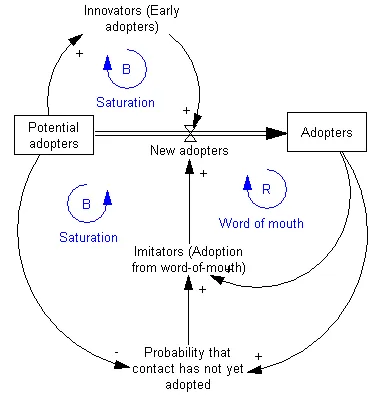
Image: Stocks, flows, and causal loops, credits: https://en.wikipedia.org/wiki/System_dynamics
System dynamics is used in many areas, like understanding the behavior of an economic system, a population system, and the spread of a virus and innovation to a given population.
Professor Sterman delivers a handbook on applying system dynamics to the business context. The book is also an encyclopedia containing all the information concerning system dynamics.
If you want to solve complex problems and impress, that is your book, your area of expertise. But you have to invest a lot of time reading and practicing system dynamics. It is not easy; it is hard, but in the end very rewarding!
10. Accomplishment: How to Achieve Ambitious and Challenging Things by Michael Barber
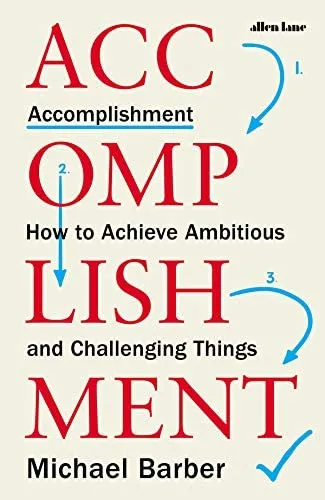
Image: Accomplishment book cover by Allen Lane editions
A manager must deliver results. In other words, a manager must accomplish goals to succeed.
Accomplishing things can be very hard, challenging, and frustrating, especially when there is no given methodology.
Michael Barber, an experienced government and business consultant, brings his wisdom to this book and informs us about the stages of accomplishment.
The book is divided into two parts; part I with the title Getting Ready and Part II with the title Getting Done. Each part has special chapters with lots of advice and how-to guides that drive the reader through the accomplishment stages.
The book is enhanced with real-life examples, making it a good choice for your Management library.
Epilogue
Reading books while a professional manager is a luxury nowadays as it requires a significant investment of time and energy.
Although reflecting, reading, and searching for answers to practical problems can be rewarding when you enrich this process with the wisdom of unique books.
All the books on the list helped me in separate parts of my managerial practice, each contributing the unique wisdom it carries.
I hope to be the same for you.
P.G.V.


